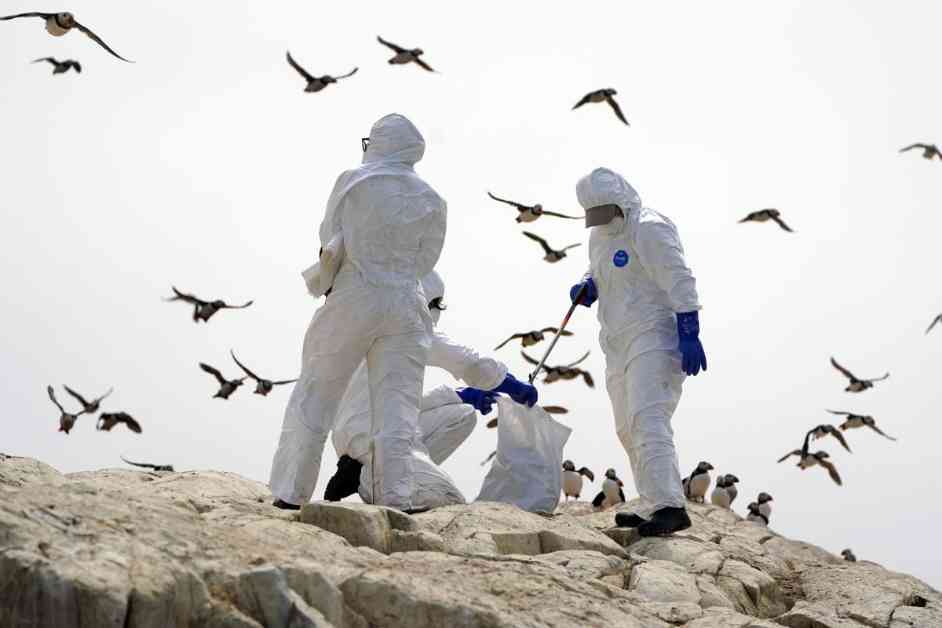Unprecedented Case of Human Bird Flu Infection Raises Concerns
A recent case in the United States has raised alarm bells in the medical community as it marks the first instance of a person being hospitalized with bird flu without any known contact with animals. This development has sparked an urgent investigation to determine how the individual contracted the infection, which has left experts scrambling for answers.
The patient, who resides in Missouri, has baffled health officials by testing positive for the H5 strain of bird flu despite not having any direct exposure to infected animals. This has raised fears of potential human-to-human transmission of the virus, a scenario that could have serious implications for public health. However, the Centers for Disease Control and Prevention (CDC) has moved swiftly to allay concerns by stating that the risk to the general public remains low. Contact tracing efforts have so far not revealed any additional cases linked to this particular incident.
Uncovering the Source of Infection
One plausible explanation put forth by experts is that the patient may have unknowingly consumed milk contaminated with the H5N1 virus, which is known to be circulating among cattle. This theory is supported by the fact that there is evidence of various transmission routes within animal populations, including from wild birds to cows, cows to poultry, and even one documented case of cow-to-human transmission.
Dr. Benjamin Anderson, an assistant professor in the Department of Environmental and Global Health at the University of Florida, expressed deep concern over the discovery of this case. He emphasized the need to closely monitor the situation and investigate whether the individual had any indirect exposure to agricultural settings or products. The sequence of the virus also remains a critical piece of the puzzle, as it could shed light on whether the strain is linked to those circulating in dairy cattle.
Expert Insights and Concerns
Thomas Peacock, an influenza virologist at the Pirbright Institute, highlighted the importance of ruling out potential sources of infection, such as raw milk. He emphasized that investigating all possible routes of exposure is crucial in unraveling the mystery behind this unusual case. Peacock’s remarks underscore the need for a thorough and comprehensive approach to understanding how the virus may have made its way to the patient.
The discovery of this unprecedented case has underscored the need for vigilance and quick action in the face of emerging infectious diseases. The global health community must remain on high alert to detect and respond to such threats promptly and effectively. With the ongoing challenges posed by the COVID-19 pandemic, the emergence of novel infections like this case of bird flu serves as a stark reminder of the ever-present risks that infectious diseases pose to public health.
Prevention and Control Strategies
In light of this concerning development, health authorities are urging the public to remain vigilant and take necessary precautions to protect themselves from potential exposure to bird flu. Simple measures such as practicing good hand hygiene, avoiding contact with sick animals, and consuming only pasteurized dairy products can help reduce the risk of infection.
Additionally, health officials are emphasizing the importance of early detection and prompt treatment in cases of suspected bird flu. Timely intervention with antiviral medications can significantly improve outcomes and reduce the spread of the virus to others. Healthcare providers are encouraged to maintain a high index of suspicion for bird flu in patients presenting with flu-like symptoms, especially in regions where the virus is known to be circulating.
Conclusion
In conclusion, the first human case of bird flu without animal exposure represents a significant and concerning development in the field of infectious diseases. While the exact source of the infection remains unclear, experts are working diligently to unravel the mystery and prevent further spread of the virus. Public health measures, including surveillance, prevention, and control strategies, will play a crucial role in containing the threat posed by bird flu and safeguarding the health of communities worldwide. By remaining vigilant and proactive, we can mitigate the risks associated with emerging infectious diseases and protect the well-being of individuals and populations.












